| |
|
|
| |
Mira Mar Veterinary Hospital
|
|
| |
|
|
| |
|
|
| |
|
|
|
|

|
| |
FESTIVE SEASON CHEER FROM MIRA MAR VETS!
|
|
| |
|
|
| |
Well, the "silly season" is upon us again!
This is the time each year when we reflect on the events of the past 12 months and remain ever thankful to the wonderful clients who continue to trust us with giving their pets the best possible care that we can.
We wish every one of you a safe and happy festive season and look forward to another exciting year ahead in 2023. |
|
|
|

|
| |
Please be advised that the clinic will be CLOSED over the public holiday periods of the festive season.
As much as we hope all of our furry friends remain safe and well over the Christmas break, we know that emergencies can arise after hours. You can be assured that we will always have one of our experienced vets available by phone when the clinic is closed. |
|
|
|

|
| |
Final Puppy Preschool for 2022!
|
|
| |
|
|
| |
Look at this gorgeous bunch of Puppy Preschool graduates!
Congratulations to all of these adorable puppers for graduating with flying colours:
- Bowser, Cookie, Dinozzo, Fabio, Izzy, Maisy, Maverick and Panda
This is our final Puppy Preschool class for 2022, and nurse Jodie is looking forward to meeting a whole lot of new pups in 2023! |
|
|
|

|
| |
Christmas foods that could upset your dog
|
|
| |
|
|
| |
When you think about Christmas foods that might upset you, you’re probably thinking about being left with all the “dodgy” leftovers in a box of Cadbury Favourites (although some of us maintain that Turkish Delight is a valid and enjoyable flavour!).
However, when we talk about Christmas foods that could upset your dog, we’re talking about festive fare which could be dangerous and even toxic to them. Here’s a list of foods to avoid giving your pet this holiday season:
Cooked bones
When cooked, bones become brittle and are more likely to splinter into sharp shards which can cause injuries to your pet’s mouth, oesophagus or gut. In the worst-case scenario, sharp bone pieces may perforate intestines, necessitating emergency surgery.
Grapes and raisins
Grapes and raisins are a tricky toxin, in that some pets appear to be able to eat them with no apparent issues, whereas other pets can develop potentially fatal kidney damage after eating just a few. We strongly recommend avoiding the risk, and never feeding your pet these foods.
Fatty foods
In some dogs, feeding highly fatty foods such as crackling, ham, or turkey skin, can trigger painful inflammation of the pancreas, referred to as pancreatitis, leading to vomiting, diarrhoea, dehydration, and one very miserable pet.
Chocolate, coffee beans or cocoa
Unlike us, dogs cannot tolerate the theobromine or caffeine components in these foods and can develop gut upset, heart rate abnormalities or seizures after consuming relatively small amounts.
Onions and garlic
Pets who consume significant amounts of onion or garlic (e.g. in turkey stuffing) can initially develop signs of gut upset, and then several days later, may show symptoms of anaemia (such as weakness and pale gums).
Xylitol sweetener
Xylitol sweetener can be present in some “sugar-free” gums or lollies, and can cause life-threatening liver damage and low blood sugar levels in pets.
If you have any concerns about any potential toxicities in your pet, chat with our knowledgeable team. |
|
|
|
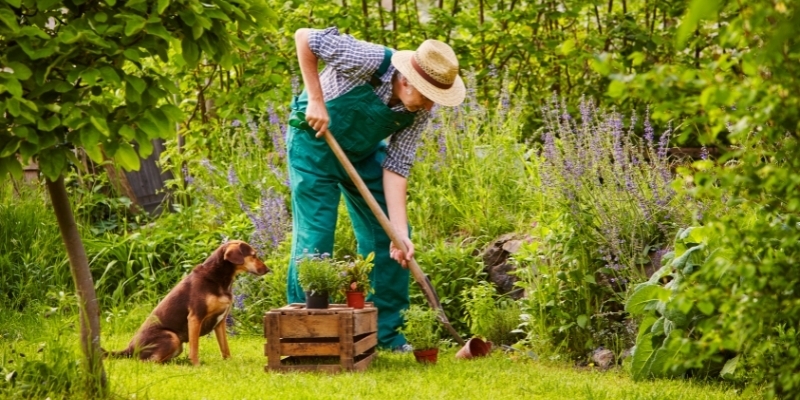
|
| |
Our guide to poisonous plants
|
|
| |
|
|
| |
With many of us spending more time outdoors in the warmer weather, it’s sensible to ensure that your pet doesn’t have access to any poisonous plants, either in your garden or whilst out on walks. Here are a few common toxic plants to be aware of, and what to do if you think your pet may have eaten some.
Poisonous plants
A few commonly encountered toxic plants for pets include:
- Sago palm and other cycads – can cause gut upset and severe liver damage
- Aloe vera – can cause gut upset and lethargy
- False Bamboo and Lucky Bamboo – can cause weakness, wobbliness or seizures
- Ferns – can cause skin irritation or gut upset
- Ivy – can cause mouth irritation and gut upset
- Lilies – can cause gut upset and severe kidney damage
- Jade plant – can cause gut upset and wobbliness
- Lantana – can cause gut upset, paralysis and possible liver failure
- Yesterday-Today-Tomorrow – can cause gut upset, tremors, wobbliness or seizures
For a more comprehensive list of toxic plants, check out this Australian list or search this (US-based) site.
What should I do if my pet has just mouthed/consumed a potentially toxic plant?
- Remove your pet from the plant and wipe/rinse out their mouth
- Do NOT give your pet anything to eat or drink and do NOT try to induce them to vomit except on veterinary advice, as with some toxins, vomiting can actually cause more harm
- Even if your pet seems OK, phone our team immediately for advice (or contact a service such as the Animal Poisons Helpline). If your pet is showing any symptoms of unwellness, bring them in for urgent veterinary care.
In cases where a pet has ingested a serious toxin, rapid veterinary treatment will maximise their chance of a full recovery.
Ask our helpful team if you have any further questions about poisonous plants and pets |
|
|
|
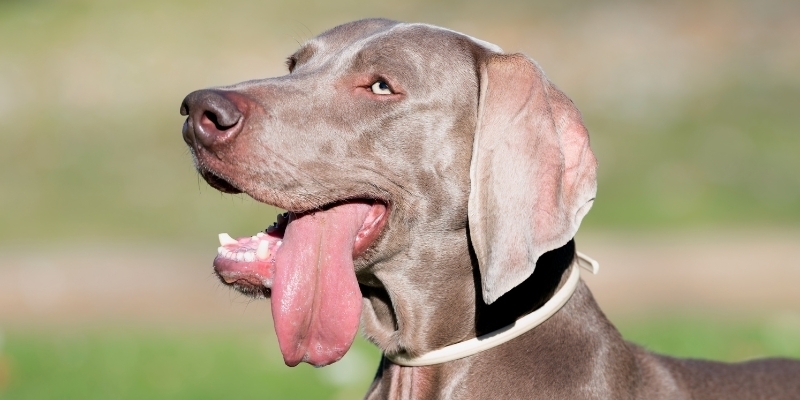
|
| |
Harry's feeling the heat
|
|
| |
|
|
| |
Harry, the one-year-old weimaraner, was having the time of his life at the beach on a gorgeous summer’s day. He and his equally energetic owner Sarah were loving the sun and sand (although after being dumped by a wave when he swam out too far, Harry was now not so sure about the surf).
After another enthusiastic off-leash game of fetch along the beach, Harry returned slowly back to Sarah panting heavily and trembling, and then suddenly collapsed weakly down onto the sand.
Sarah offered Harry some water, which he was able to lap at. Sarah tipped the remaining water over Harry, and then quickly bundled him into the car and drove him to his regular veterinary hospital, with the cool air-conditioning turned on full force. On the way, Sarah managed to phone the clinic and inform them of Harry’s symptoms and her likely arrival time.
Whilst Sarah made her way to the clinic, the veterinary staff quickly considered what the problem could be with Harry, and therefore what equipment they might need ready.
Some of the potential causes they considered included:
- Overheating
- A potential beach toxin, such as eating a puffer fish
- A near-drowning experience from being dumped by the wave, leading to seawater in Harry’s lungs
- A severe allergic reaction
On arrival at the clinic, Harry had perked up a bit, although he still seemed a bit weak. On examination by the veterinary team, he was found to have a moderately elevated body temperature and mild dehydration. The vet diagnosed Harry with likely heat exhaustion (dangerous overheating, but not yet to the severe level of heat stroke where internal organ damage can occur). Sarah agreed to have Harry admitted into the veterinary clinic for the rest of the day for ongoing cooling and rehydration, and close monitoring by the team.
Happily, Harry made a full recovery back to his normal hyper self. Sarah is now very careful about not exercising Harry vigorously in hot weather, and making sure she regularly interrupts his wacky weimaraner antics to enforce rehydration and rest breaks. |
|
|
|
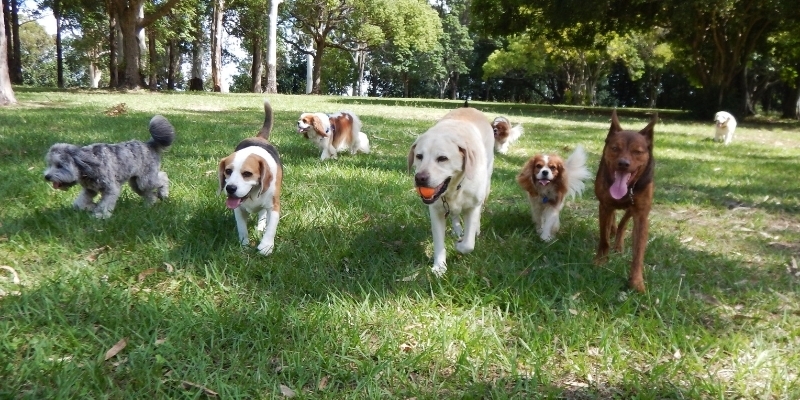
|
| |
Four steps to a cool, calm and collected canine
|
|
| |
|
|
| |
Is your dog a gold star canine citizen? Check out these four tips for helping your dog to feel cool, calm and collected in and out of the house!
Early socialisation and regular training
You can set your dog up for success early on by ensuring they are well-socialised. This involves exposing them to a variety of new people, pets, places and handling techniques in a positive and gentle manner so that they learn that there is nothing to fear. Attending a well-run puppy school can be a great start.
As your dog grows, attending an obedience training course that utilises positive reinforcement techniques (rather than any type of punishment) can really build your dog’s confidence and teach them lovely manners!
Calm control
When bringing your dog out in public, it’s your responsibility to ensure that they’re always under control. Even if your dog is friendly, not everyone will want to meet them, e.g. rescue dogs who are highly fearful or unpredictable with other dogs approaching them. Unless your pet is friendly and in a designated off-lead area, they should be kept on-lead.
Regular mental and physical exercise
A tired dog is generally a calm dog! Ensure that your dog receives daily physical exercise and mental stimulation appropriate to their breed. Otherwise, you may find that they “blow off steam” in less desirable ways, such as hyperactivity or problem barking.
Veterinary assessment
If your dog is showing undesirable behaviours such as anxiety or aggression, it’s best to book an appointment with one of our vets for further assessment. With the correct diagnosis, we can recommend an effective treatment plan to help your pet to feel their best!
Ask our knowledgeable team if you have any further questions about encouraging the best behaviour in your canine family member! |
|
|
|
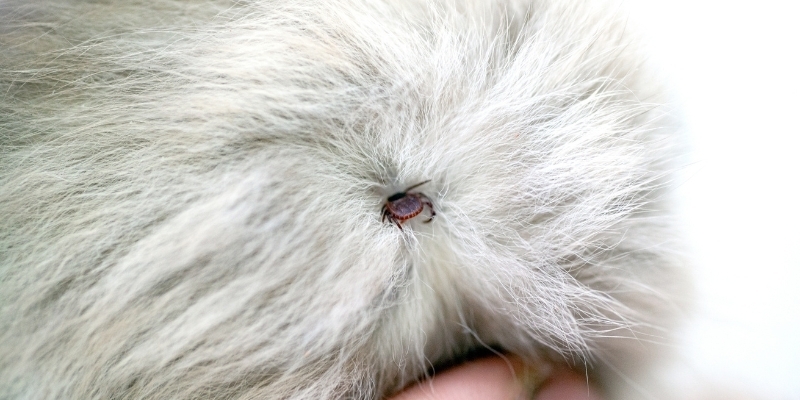
|
| |
That's a tick for tick prevention
|
|
| |
|
|
| |
Ticks can be a problem for dogs and cats year-round, but particularly during the warmer seasons when our pets are likely spending lots of time outdoors and ticks are more active.
What symptoms do ticks cause?
Pets can be affected by several different species of tick.
LUCKILY IN ALBANY, WE DO NOT SEE PARALYSIS TICKS! Paralysis ticks occur in bushy coastal areas along the eastern seaboard of Australia, from north Queensland to eastern Victoria and can cause paralysis and death.
Other types of ticks, found all across Australia, include the brown dog tick, the cattle tick, and the bush tick. These ticks do not cause paralysis, but rather localised skin irritation where they attach. However, in some regions of Australia, these ticks can also carry and transmit dangerous diseases such as ehrlichiosis, which is present in northern parts of Western Australia.
How can I protect my pet from ticks?
We recommend year-round protection against ticks for all at-risk pets. Have a chat with our knowledgeable team for personalised advice on the safest and most effective tick prevention product options for your pet.
Whilst veterinary-strength tick prevention products are highly effective, they are not 100% guaranteed to prevent tick-related diseases. Therefore, it’s also important that owners of pets in known tick areas learn to tick-search their pet daily (particularly during the warmer months of the year) and how to remove ticks. Here is a video demonstrating a good tick search and removal technique, but please ask our team if you are still unsure.
Lastly, if you notice any suspicious signs of unwellness in your pet, it’s always best to have them checked promptly by one of our vets.
Give ticks the flick this summer!
|
|
|
|
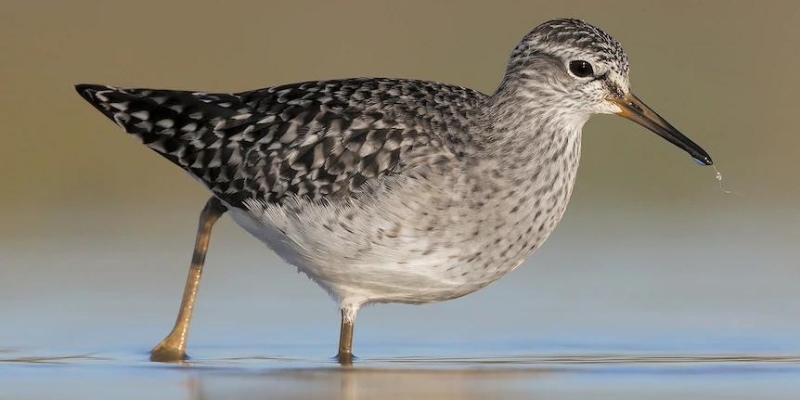
|
| |
Animal News In Brief
|
|
| |
|
|
| |
From Russia with grub
Ah, the Christmas holiday season, a time for travel and adventure, where airport terminals across the world echo with garbled calls for final boarding, couples bicker, and children’s iPads ping and brrrrring!
But if the sound of that doesn't appeal to you, you might like to try Christmas travel the Sharp-tailed sandpiper way:
Every August, the tiny sandpiper journeys from Siberia, Russia, to wetlands and mudflats across Australia, to bask in the warm sunshine and feast on an all-you-can-eat grub buffet, all summer long.
Not a bad package, if you’re fit enough to make the journey! At roughly 9,700 kms, it might be a mammoth flight, but we bet it's one heck of a view along the way, plus, they don’t even have to queue up to use aeroplane toilets!
"We always see the sandpipers here in big numbers, and they are always the first to arrive and last to leave," said Rex Whitehead, a Mt Isa resident and local bird watcher.
According to a study conducted by the New South Wales Local Land Services, some birds have been tracked making journeys as far as 11,000 kms from Victoria, Australia, back home to Russia.
We just hope that this March, when the sandpipers return home to breed, at least one sandpiper-dad remembers to make the obligatory travel-related joke:
“I just flew in from Australia, and boy my arms are tired!”
Click here to read ABC News’ full article on the migration of Russian Sharp-tailed sandpipers.
Save the last dance for Rat
We’re all familiar with the famous Bob Fosse line, “Dance like nobody’s watching,” but at the University of Tokyo in Japan, a team of researchers are watching, and you won’t believe what they’ve discovered.
The researchers have recently published their new study, where they documented that rats, like humans, ‘bob’ their heads along to the beat of music.
"Rats displayed innate — that is, without any training or prior exposure to music — beat synchronisation," said researcher Dr Hirokuzu Takahashi.
The researchers made their discovery by fitting wireless accelerometers to the heads of ten rats before measuring their movement while exposed to a playlist that included minute-long excerpts of Mozart, Queen, Lady Gaga, Michael Jackson and Maroon 5. Twenty humans also participated in the research.
Surprisingly, the study found that both rats and humans jerk their heads to the beat in a similar pattern, and that music in the 120-140 beats per minute range provided the window for optimal beat synchronicity for both species.
As cute as this discovery undoubtedly is, you might be wondering what purpose such a study serves.
"[I am] interested in how, why and what mechanisms of the brain create human cultural fields such as fine art, music, science, technology and religion," Dr Takahashi said.
"I believe that this question is the key to understanding how the brain works and developing the next-generation AI (artificial intelligence).”
Click here to read ABC News’ full article on the University of Tokyo’s recent study.
Vets providing comfort for terminal pets and their families
It’s a fact of life that one day we will have to say goodbye to our beloved pets. You’d be forgiven for feeling more than a little anxious about the prospect of caring for your furbabies throughout their final months. For most people, it's a faraway prospect; they'd rather not think about it until they have to.
But for veterinarian Courtney Prue, founder of Sydney’s mobile veterinary service, Rest Your Paws, palliative care for Sydney pets is her everyday focus.
“I’m originally from Canada, and in North America it’s a really well-established area of veterinary medicine. You can have a veterinarian come to your home and help you through your pet’s final weeks, days or months”, said Dr Prue.
While the area of veterinary palliative care is relatively new for Australia, demand for care options for animals near the end of their life has increased over the past 10 to 20 years, as the culture and nature of owner-pet relationships has changed.
“The relationships that people have with their pets now is so different to how it was 20 years ago or even 10 years ago. So many people feel that their dog or their cat is a family member," said Dr Prue.
12-year-old Rhodesian ridgeback, Vegas, who was diagnosed with spinal and hip tumours, attends hydrotherapy twice a week and uses a brace and a wheelchair to go on walks. Rather than surgery, Vegas’ owner, Georgia Morrison, opted for a range of alternative therapies to optimise wellbeing and comfort in Vegas’ final stage of life.
"We don't have any children, so this is our child, so I don't see why he should get any less care than a human," Ms Morrison said.
Click here to read the full article by ABC News.
|
|
|
|
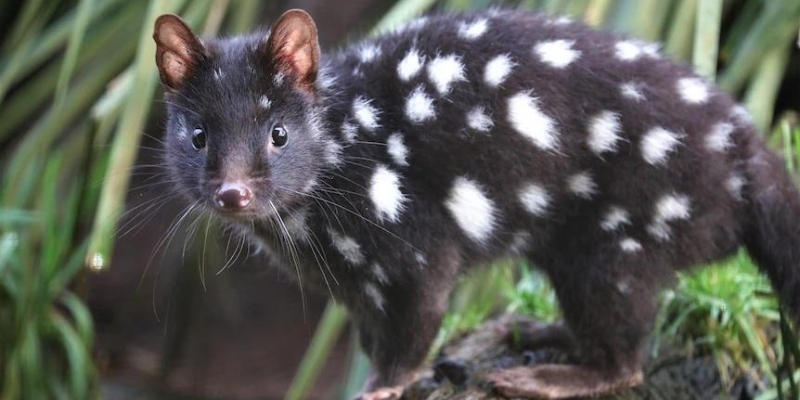
|
| |
Endangered animal sanctuary hears the pitter-patter of tiny feet this Christmas...
|
|
| |
|
|
| |
The Eastern Quoll, once a fixture of Australian fauna, became extinct on the mainland in the 1960’s and is now only found in the wild in Tasmania, where numbers are steadily declining. But new results are in: Aussie Ark’s endangered Eastern Quoll breeding program has set a record this year, with a stunning 63 baby joeys born this season, setting the record for the highest birth rate the program has seen so far.
Viewed by early settlers as a pest, we can credit the gradual disappearance of the Quolls to poisoning, trapping and land clearing, as well as the impact of feral foxes and cats.
Thankfully, the Animal Ark program established in 2017, in cooperation with Barrington Wildlife sanctuary on the New South Wales Mid North Coast, is committed to repopulating mainland Australia.
"[We’re] bringing a species back from the brink to reclaim the Australian bush,” said Aussie Ark operations manager Dean Reid.
Newborn Quolls are as small as a grain of rice, and like most marsupials, spend the beginning of their life in the safety of their mother’s pouch, before they emerge two months later, brown, spotted and entirely charming.
"Our goal is to maintain these Quolls inside our feral-proof sanctuary, and they are doing extremely well,” said Jake Meney, who also works with the Eastern Quolls.
Though vulnerable prey themselves, their razor-sharp claws make them excellent rabbit hunters, which means the reintroduced quolls could help to manage local feral rabbit populations.
We commend Aussie Ark and Barrington Wildlife Sanctuary for their ‘quoll-ity’ contribution to Australian wildlife preservation!
Click here to read ABC News' full article on Barrington Wildlife’s Quoll Joeys.
|
|
|
|
| |
This email contains comments of a general nature only and is not intended to be a substitute for professional veterinary advice. It should not be relied on as the basis for whether you do or don't do anything.
All content © PetPack 2022 |
|
|
|
[Footer]
|